[caption id=“attachment_1558037” align=“alignleft” width=“940”] 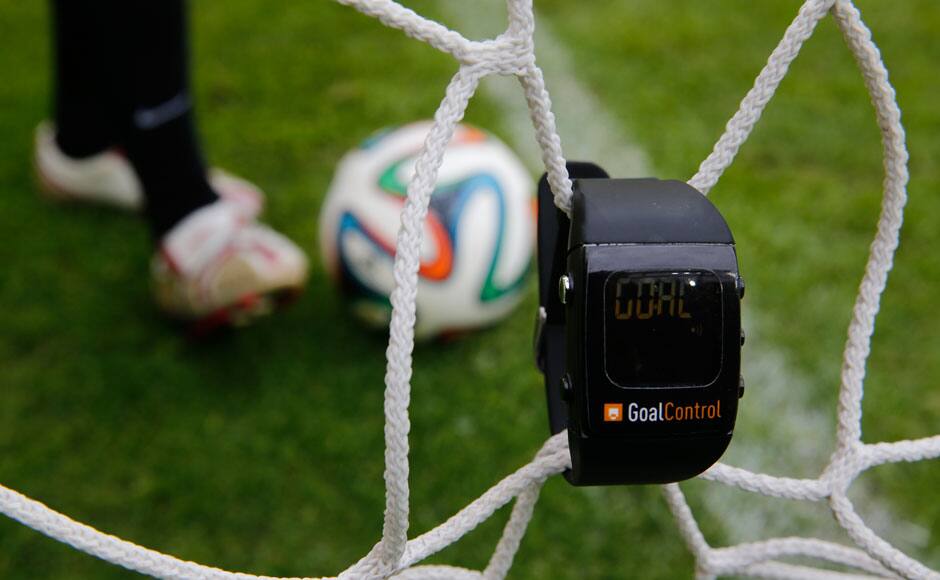 A GoalControl watch reads “goal” as a football rolls fully behind the goal line during a demonstration in the western German city of Aachen May 28, 2014. German firm GoalControl has been appointed by FIFA as the official provider for the goal-line technology (GLT) at the upcoming 2014 soccer World Cup in Brazil. GoalControl uses 14 high-speed cameras around the pitch as part of its GoalControl-4D system, which are fixed in elevated positions around each goalmouth. The ball’s position is continuously captured in three dimensions - X, Y and Z coordinates. All the cameras are linked to a computer processing system, which filters out players, the referee and any other objects. Only the ball remains, with its position precise to a few millimetres in the coordinate system of the pitch, according to the GoalControl website. The watch will be worn by referees and will display the word “goal” together with a vibration alert within one second, if the ball has fully crossed the goal line. REUTERS[/caption] [caption id=“attachment_1558039” align=“alignleft” width=“940”] 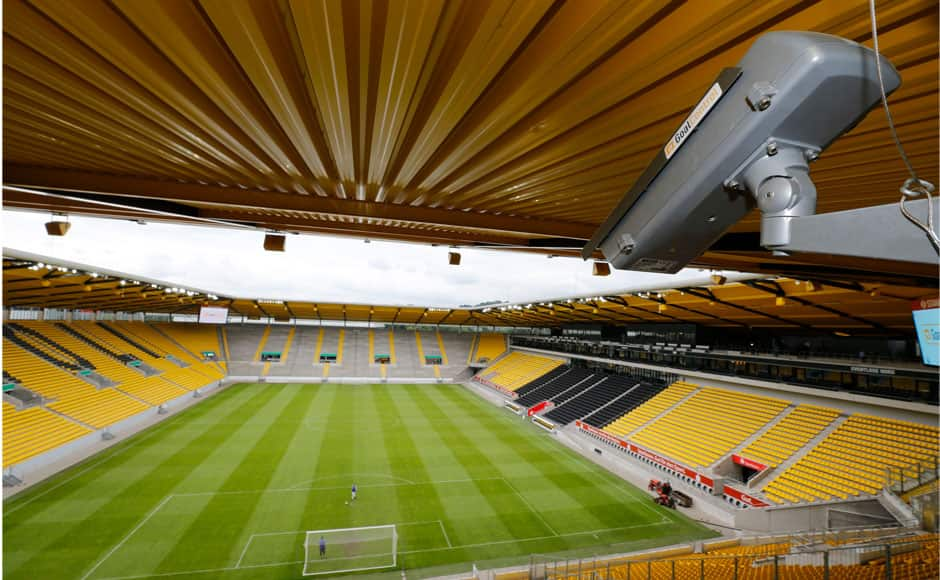 General view of a GoalControl goal line technology (GLT) high-speed camera at the Tivoli stadium during a demonstration of the GLT in the western German city of Aachen May 28, 2014. German firm GoalControl has been appointed by FIFA as the official provider for the goal-line technology at the upcoming 2014 soccer World Cup in Brazil. GoalControl uses 14 high-speed cameras around the pitch as part of its GoalControl-4D system, which are fixed in elevated positions around each goalmouth. The ball’s position is continuously captured in three dimensions - X, Y and Z coordinates. All the cameras are linked to a computer processing system, which filters out players, the referee and any other objects. Only the ball remains, with its position precise to a few millimetres in the coordinate system of the pitch, according to the GoalControl website. The watch will be worn by referees and will display the word “goal” together with a vibration alert within one second, if the ball has fully crossed the goal line. REUTERS[/caption] [caption id=“attachment_1558041” align=“alignleft” width=“940”] 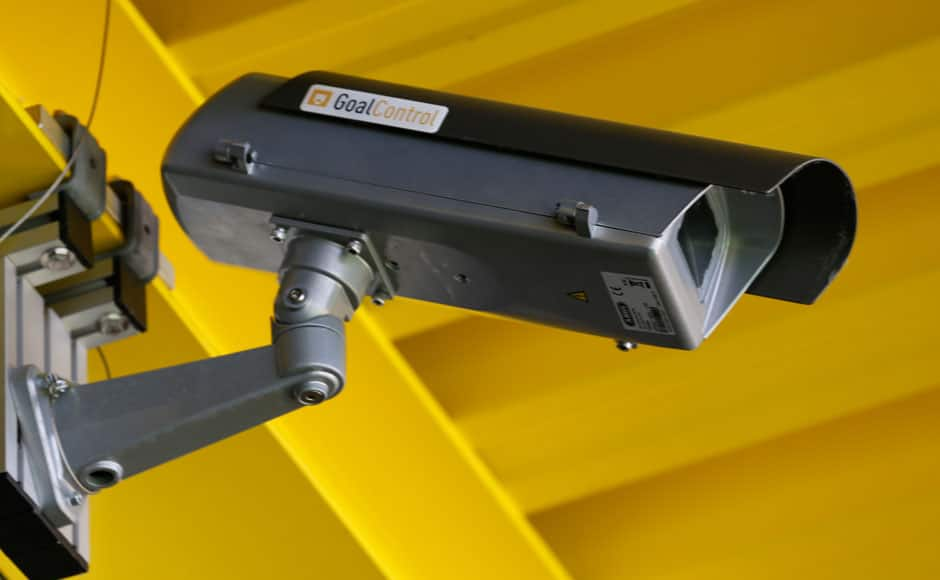 General view of a GoalControl goal line technology (GLT) high-speed camera at the Tivoli stadium during a demonstration of the GLT in the western German city of Aachen May 28, 2014. German firm GoalControl has been appointed by FIFA as the official provider for the goal-line technology at the upcoming 2014 soccer World Cup in Brazil. GoalControl uses 14 high-speed cameras around the pitch as part of its GoalControl-4D system, which are fixed in elevated positions around each goalmouth. The ball’s position is continuously captured in three dimensions - X, Y and Z coordinates. All the cameras are linked to a computer processing system, which filters out players, the referee and any other objects. Only the ball remains, with its position precise to a few millimetres in the coordinate system of the pitch, according to the GoalControl website. The watch will be worn by referees and will display the word “goal” together with a vibration alert within one second, if the ball has fully crossed the goal line. REUTERS[/caption] [caption id=“attachment_1558043” align=“alignleft” width=“940”] 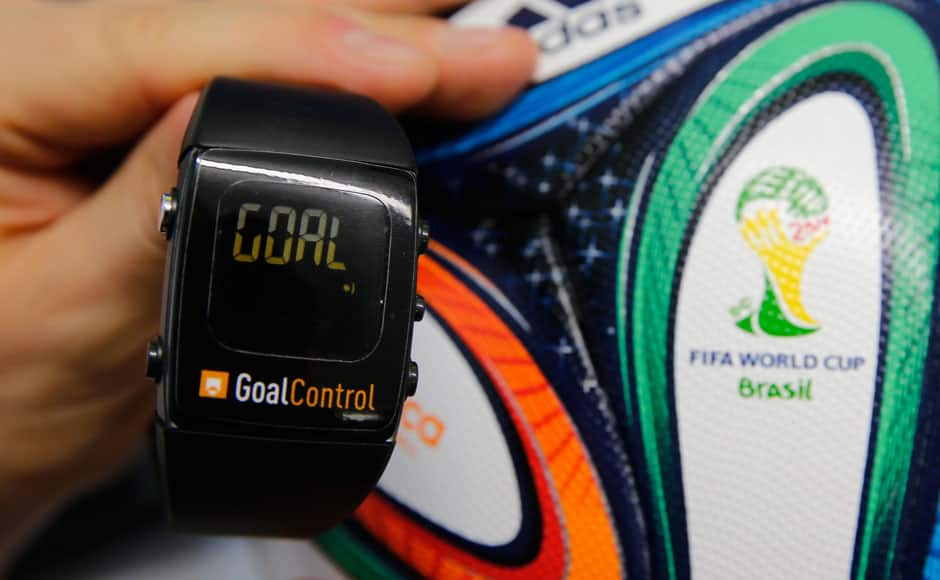 A GoalControl watch is displayed next to an official FIFA 2014 World Cup Brazil football during a demonstration of the goal-line technology in the western German city of Aachen May 28, 2014. German firm GoalControl has been appointed by FIFA as the official provider for the goal-line technology (GLT) at the upcoming soccer World Cup in Brazil. The watch will be worn by referees and will display the word “goal” together with a vibration alert within one second, if the ball has fully crossed the goal line. REUTERS[/caption] [caption id=“attachment_1558045” align=“alignleft” width=“940”] 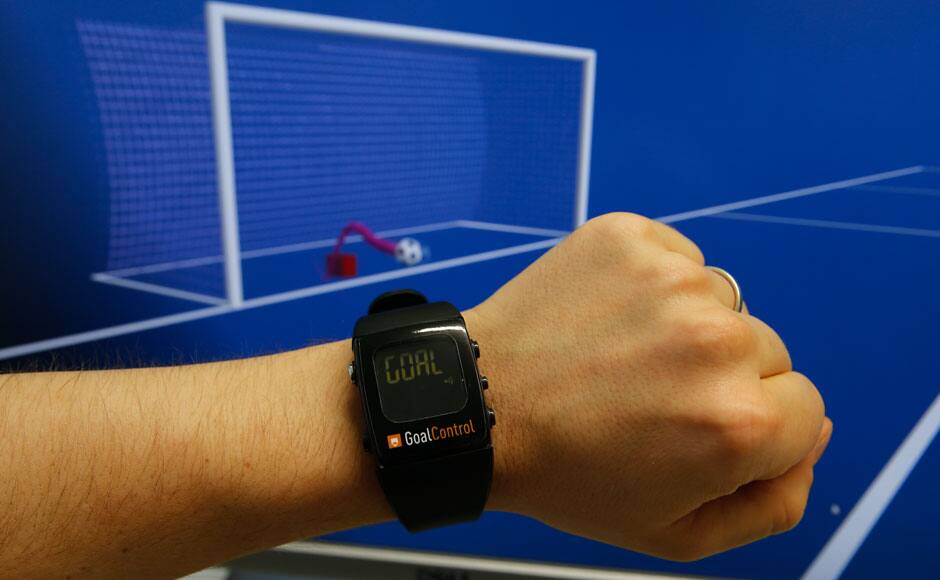 A GoalControl watch is displayed next to a control screen during a demonstration of the goal-line technology (GLT) in the western German city of Aachen May 28, 2014. German firm GoalControl has been appointed by FIFA as the official provider for the goal-line technology at the upcoming 2014 soccer World Cup in Brazil. GoalControl uses 14 high-speed cameras around the pitch as part of its GoalControl-4D system, which are fixed in elevated positions around each goalmouth. The ball’s position is continuously captured in three dimensions - X, Y and Z coordinates. All the cameras are linked to a computer processing system, which filters out players, the referee and any other objects. Only the ball remains, with its position precise to a few millimetres in the coordinate system of the pitch, according to the GoalControl website. The watch will be worn by referees and will display the word “goal” together with a vibration alert within one second, if the ball has fully crossed the goal line. REUTERS[/caption] [caption id=“attachment_1558047” align=“alignleft” width=“940”] 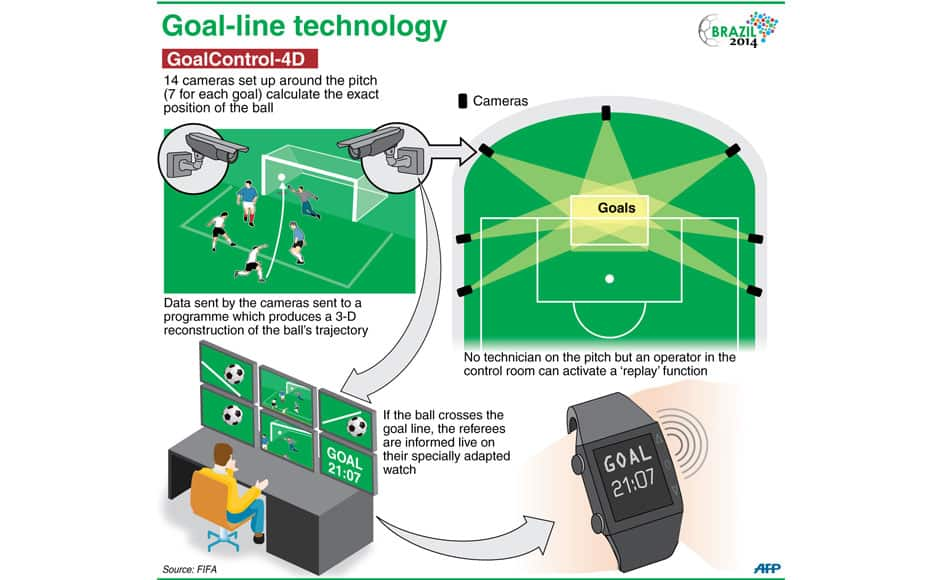 The process of how GLT works. AFP[/caption]
[caption id=“attachment_1558037” align=“alignleft” width=“940”]  A GoalControl watch reads “goal” as a football rolls fully behind the goal line during a demonstration in the western German city of Aachen May 28, 2014. German firm GoalControl has been appointed by FIFA as the official provider for the goal-line technology (GLT) at the upcoming 2014 soccer World Cup in Brazil. GoalControl uses 14 high-speed cameras around the pitch as part of its GoalControl-4D system, which are fixed in elevated positions around each goalmouth.
Advertisement
End of Article


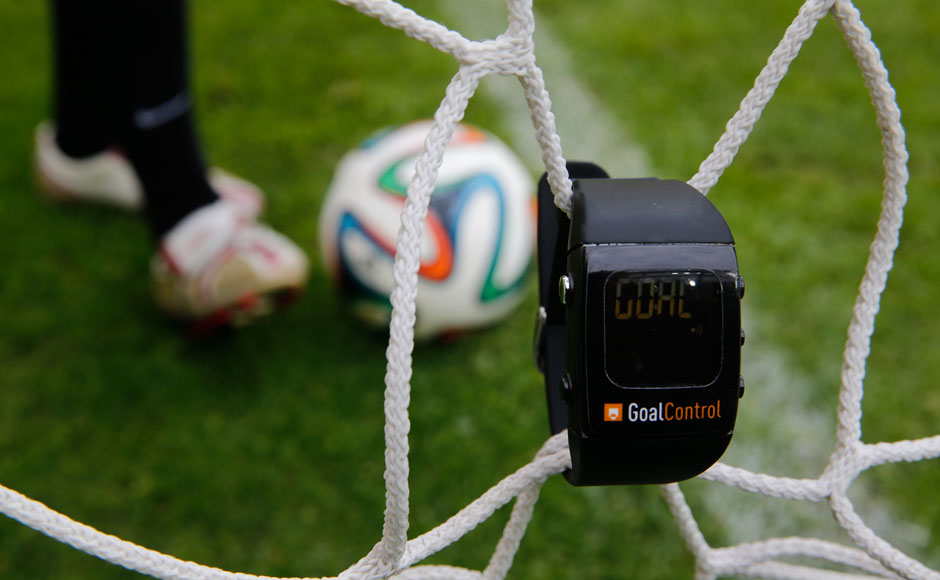)

)
)
)
)
)
)
)
)



